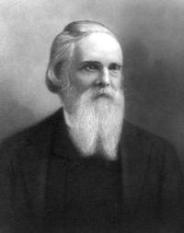
Julius Walker Adams was born in Boston, Massachusetts on October 18, 1812. He attended the United States Military Academy from 1830–31, but, resigned without graduating to start working as an assistant engineer with his uncle, Major George W. Whistler, a well-known railroad engineer, on the Paterson & Hudson River railroad. He then served as assistant engineer of the Stonington & Providence railroad in 1832. From 1836–1844, he served as engineer for the Norwich & Worcester railroad, the Western railroad of Massachusetts, the Albany & Schenectady railroad; and the Brooklyn navy yard, consecutively. From 1845, he served as Superintendent Engineer for the New York & Erie railroad (later to be called the Erie railroad). He was also the engineer for the Cochituate water works of Boston, Massachusetts in 1846. During his time with the New York & Erie railroad, he designed the stone arch Starrucca Viaduct. James P. Kirkwood, who was the construction engineer for the railroad, completed its construction by 1848. In 1851, Adams became editor of Appleton's Mechanics' Magazine and Engineers' Journal .
In 1852, he moved to Kentucky to become the chief engineer for the Lexington & Danville railroad of Kentucky. One year later he gave a presentation to the members of the American Society of Civil Engineers (ASCE) entitled Lexington and Danville Railroad Suspension Bridge over the Kentucky River. He then became the chief engineer for the Memphis & Ohio railroad in 1855. In 1856, he switched from railroad engineering to design and supervised the first large scale urban sewer system in the United States. This system was developed for Brooklyn, New York. In 1860, Adams became engineer for the water works in New Haven, Connecticut.
With the start of the Civil War, he became a colonel in the 67th New York Volunteers and served in Army of the Potomac. He was wounded in the 1862 battle of Fair Oaks, Virginia and resigned from the army to return to Brooklyn. During the New York Draft Riots in 1863, he commanded a body of armed citizens who defended New York Times and Tribune offices (whose newspapers published the names of those selected for service) from the mobs that roamed the city.
In 1864, he was also one of the first to propose the building of a suspension bridge over the East River. Later, he served on the panel of consultants that John A. Roebling assembled to review his Brooklyn Bridge proposal. After the war, Adams went back to engineering and served as chief engineer for the Brooklyn Department of City Works from 1869–1877. During this time (1875), he also took the time to examine the sewer system for the city of Providence, Rhode Island. He then served as the construction engineer for the New York City Department of Public Works from 1880–1886. Finally, his last major position was as director of the Panama railroad from 1888–1893.
In 1852, Adams became one of the founders of ASCE and helped to draft ASCE's first Constitution. He served as Director in 1853 and 1878; Vice-President from 1868–1873, and President from 1874–1875. Adams was elected Honorary Member of ASCE in 1888.
Adams was also the American editor of Templeton's Engineer, Millwright, and Mechanics' Companion — Report on the Pollution of Rivers, published by the New York Academy of Sciences in 1875. In 1880 he wrote the first comprehensive treatise, Sewers and Drains in Populous Districts, on the sewering of towns issued in America. He also presented a report to the New Jersey state board of health entitled On the Disposal of Sewage in Cities in 1883.
Adams was the son of Eli and Sarah Delano (Swift) Adams. He married Elizabeth Denison in 1835 and had five sons and three daughters. He died in Brooklyn, New York on December 13, 1899.

